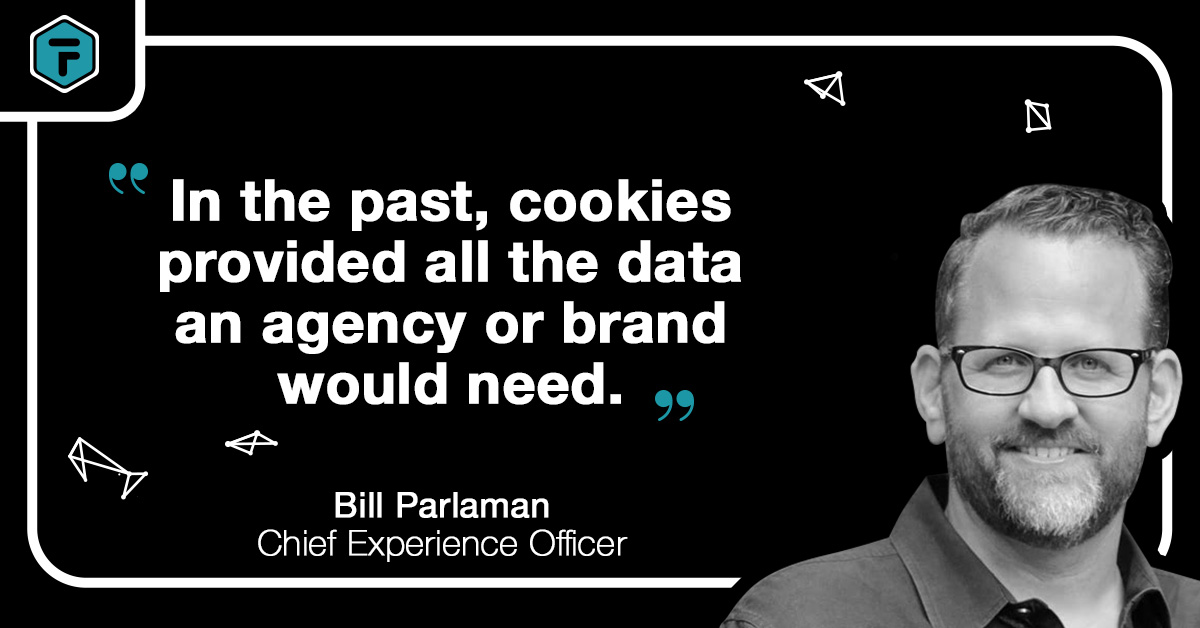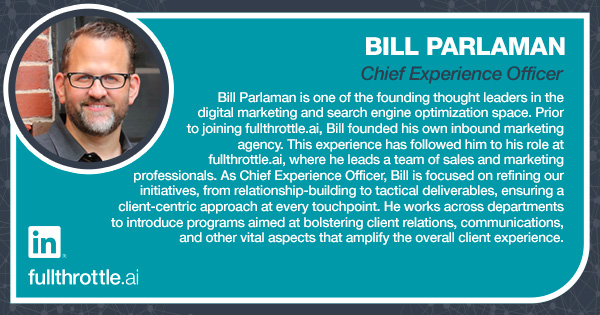
How Much Data Do You Have?
by Bill Parlaman, Chief Experience Officer
In the past, cookies provided all the data an agency or brand would need. However, as browsers begin deprecating support for third-party cookies, this scale has gone down.
Soon, there will be no more third-party cookies, and third-party data will be less reliable and accurate.
In addition, privacy legislation continues to get stricter, and regulations prevent businesses from using data that hasn’t been entirely opt-in/out.
Now, businesses must turn to first-party data to compensate for this loss. Ultimately, this is a good thing. First-party data is cleaner, less expensive, and more accurate than third-party data. Best of all, it belongs to you and not a third-party vendor.
So, what makes up first-party data? How much do agencies and brands already own?
First-party data is information a business has collected with permission from a consumer. First-party data should go through a cleaning process to ensure timeliness and accuracy.
The Ultimate First-Party Data Checklist
Which information do you currently collect?
⬜ Demographics
⬜ Website activity
⬜ Customer feedback
⬜ Email/email engagement
⬜ Encrypted household address
⬜ Phone number
⬜ Social media account
⬜ Purchase history/sales interactions
⬜ Support history/calls
⬜ Loyalty program information
⬜ Communication preferences
⬜ Product preferences, interests, and behaviors
⬜ Customized account configurations
⬜ Website visitors
This data helps you segment your audiences to send meaningful, accurate, customized marketing messages. Together, this information can show you a 360-degree view of your customer.
Methods of First-Party Data Collection
First-party data collection includes any customer information collected, both online and offline. However, it would be best to have enough of it to power your campaigns. Here are some of the ways you can collect information from your shoppers. To stay on top of current trends in data privacy, make sure you are collecting it with consent.
⬜ Customers who have previously purchased from you. These customers likely live in your CRM. You can continue to nurture those relationships to keep loyal customers, who eventually refer their friends and family to your business.
⬜ Any form fills. Roughly 5% of consumers will leave a trace behind when they visit your website. This counts as first-party data! When they fill out a form, they convert to a lead. Form fills can include filling out surveys, downloading content, signing up for an account/rewards program/coupon/newsletter, etc.
⬜ Signing into their account
⬜ Scheduling an appointment, demo, consultation, or test drive
⬜ Interactions on social media – follows, likes, comments, direct messages, clicks, etc.
⬜ Email and SMS interactions. Email can include open rates, clicks, and various engagements. SMS would include responses and interactions with links texted.
⬜ A consumer leaves a review. Use this information! Whether it’s taking feedback or following up with a loyal customer, this counts as data you should use.
⬜ Website visitors transformed into household-based data. When someone opts-in to share their location with you, your website has transformed this consumer (who likely would have left your website without you ever getting their information to follow up with them) into a lead!
Now that you’re an expert on first-party data collection, it’s time to start collecting your own! Schedule your demo today and get started on your trial Data Analysis!



